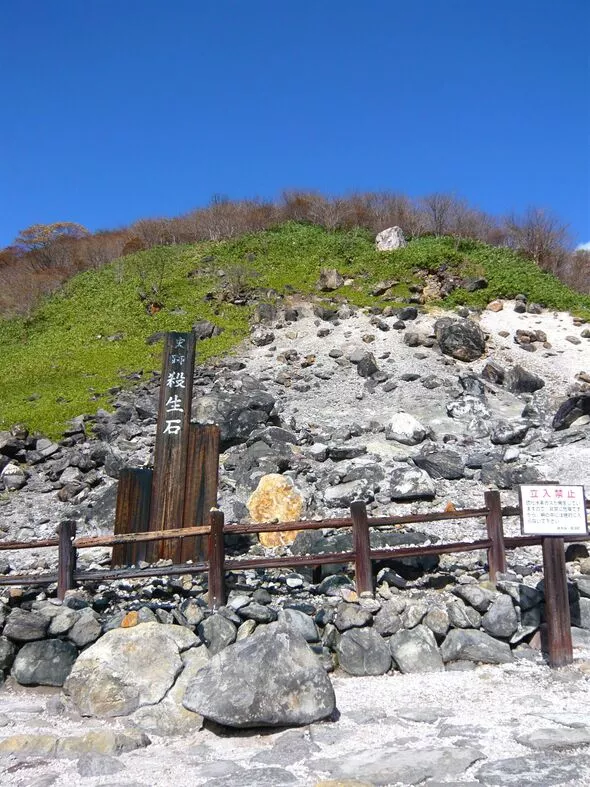Japan’s 1,000-year-old ‘killing stone’ said to contain an ancient demon cracked open
According to the legend, the 1000-year-old killing stone trapped the spirit of a malevolent being. Now, due to rainwater, the rock has split open, sending believers into a state of frenzy.
The legend warns anyone who comes in contact with the stone will die. This volcanic rock, which is officially called Sessho-Seki, is rumoured to contain the mythical Tamomo-No-Mae, also known as the Nine-Tailed Fox.
Tamomo-No-Mae was an ancient demon from Japanese mythology that took the form of a beautiful woman.
The creature was storied to be a part of a plot to kill Emperor Toba, ruler of Japan from 1107 to 1123.
The volcanic rock is actually a popular tourist attraction, located in the mountainous northern region of Tochigi, near Tokyo.
The region is famous for its sulphurous hot springs.

According to folklore, this killing stone earned its named by spewing poisonous gas at people.
However, since the rock cracked open, visitors have been fearful of approaching the site.
Some users online have even expressed fears the evil spirit has been unleashed once again.
Lily0727K, a user on Twitter, shared an image of the split rock, writing: “I came alone to Sesshoseki, where the legend of the nine-tailed fox remains.

“It was supposed to be, but the rock was split in half and the rope was also detached.
“If it’s a manga, it’s a pattern that the seal is broken and it’s possessed by the nine-tailed fox, and I feel like I’ve seen something that shouldn’t be seen.
“I’m getting really scared.”
According to local reports, the rock had actually begun cracking a couple of years ago. Most likely, rainwater seeped into the rock, degrading it over the years until it finally split open.

Local officials are now figuring out what to do with the rock’s remains and are looking into whether they could attempt to restore it. Others have commented on the split rock, saying: “Here I thought 2022 couldn’t get worse.
“Now a furious Japanese spirit is freed from its ‘killing stone’.”
But another joked: “My guess is the demon is going to look around at 2022 and want to go back into the rock for another millennium.”
The Japanese newspaper quoted a tourism official as saying he would like to see the Sessho-Seki restored to its original form.
Hopefully, the rumoured demon within the stone would be restored to its rocky prison as well. The killing stone was registered as a local historical site in 1957 and was also mentioned in Matsuo Basho’s The Narrow Road to the Deep North.
The site has inspired a Noh play, a novel and an anime film.





